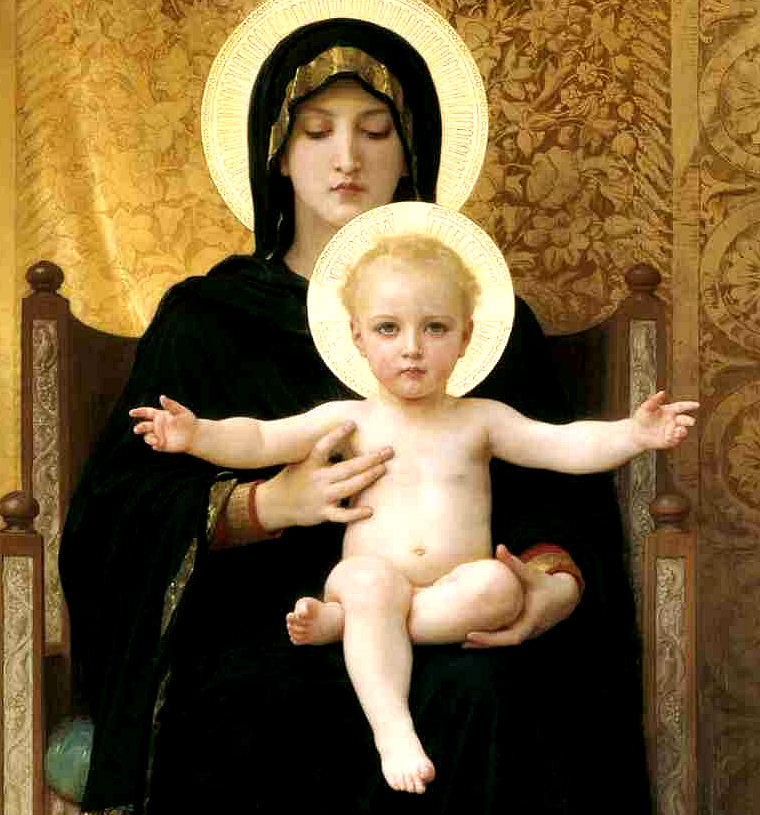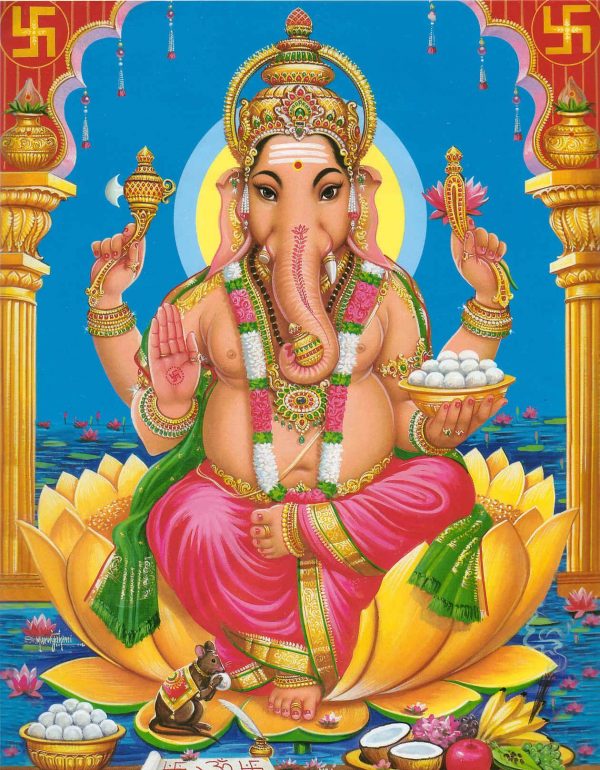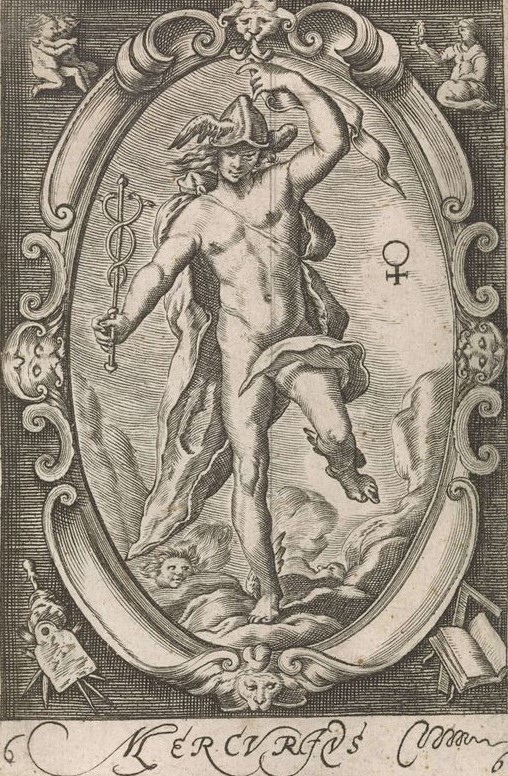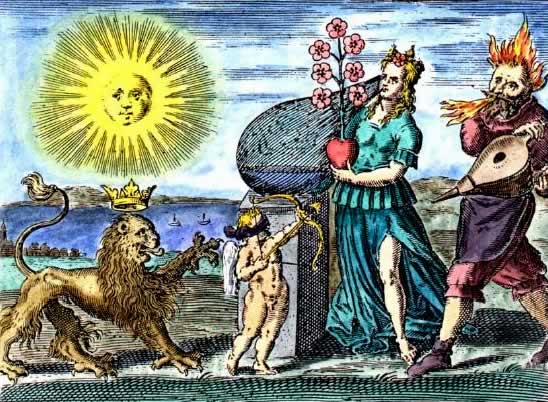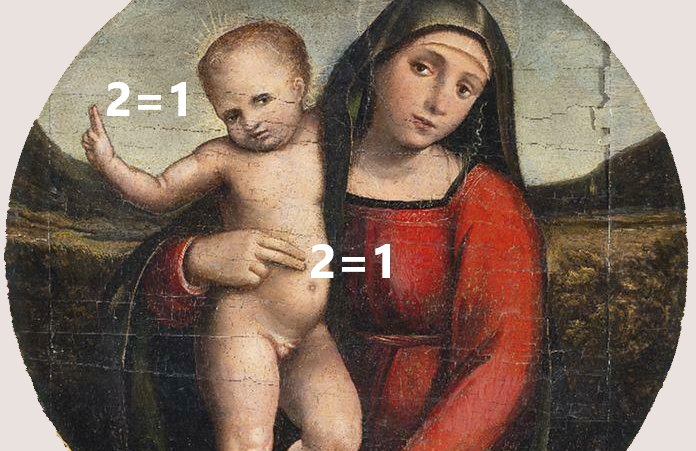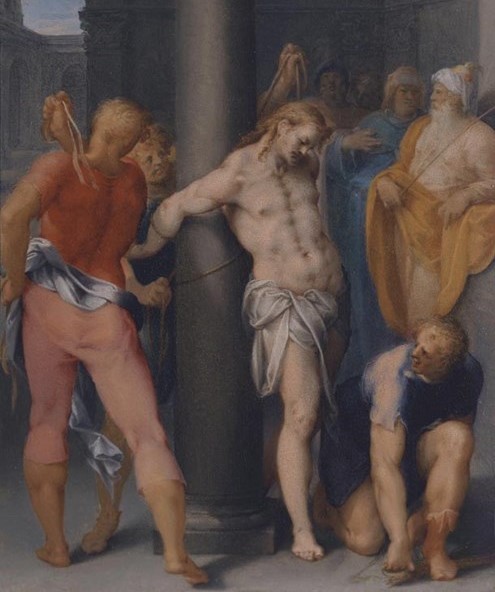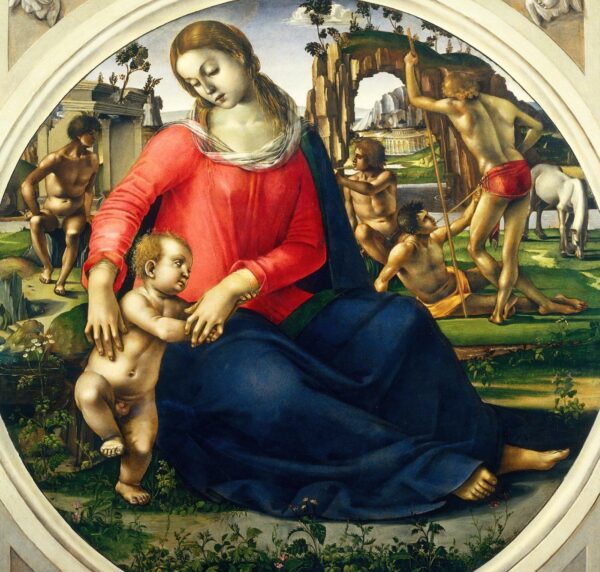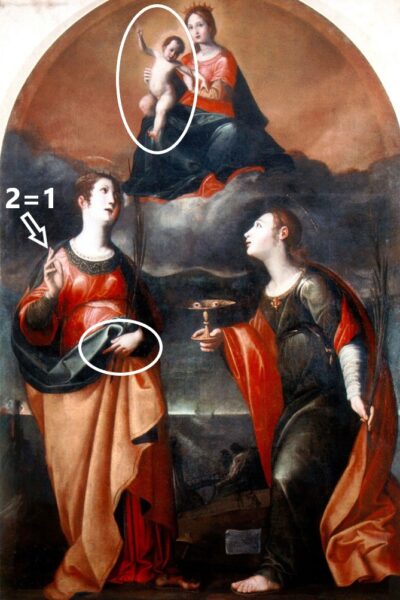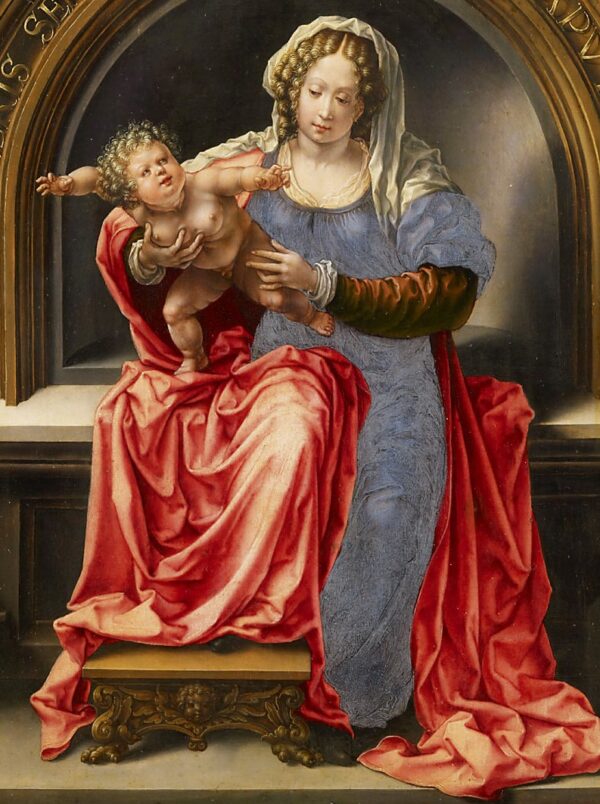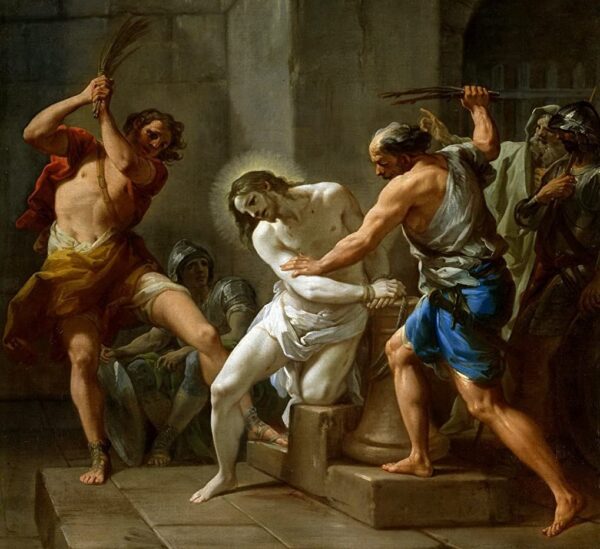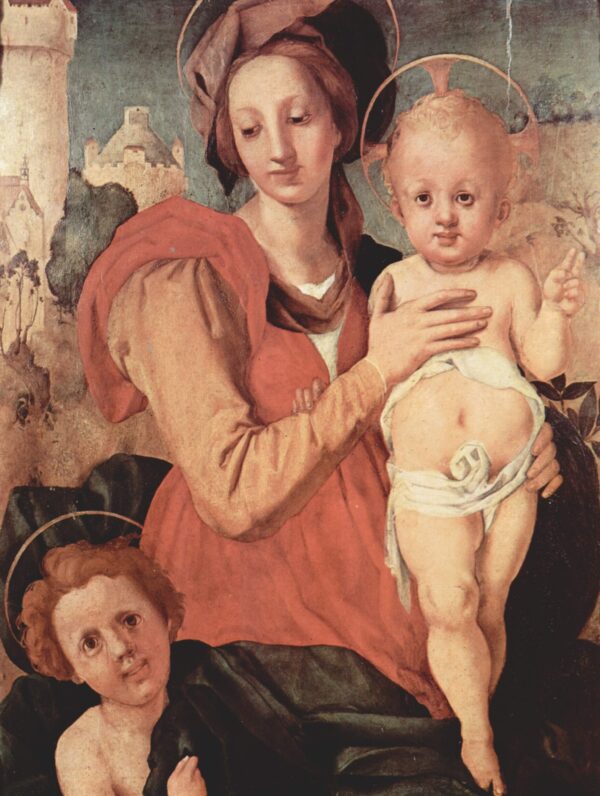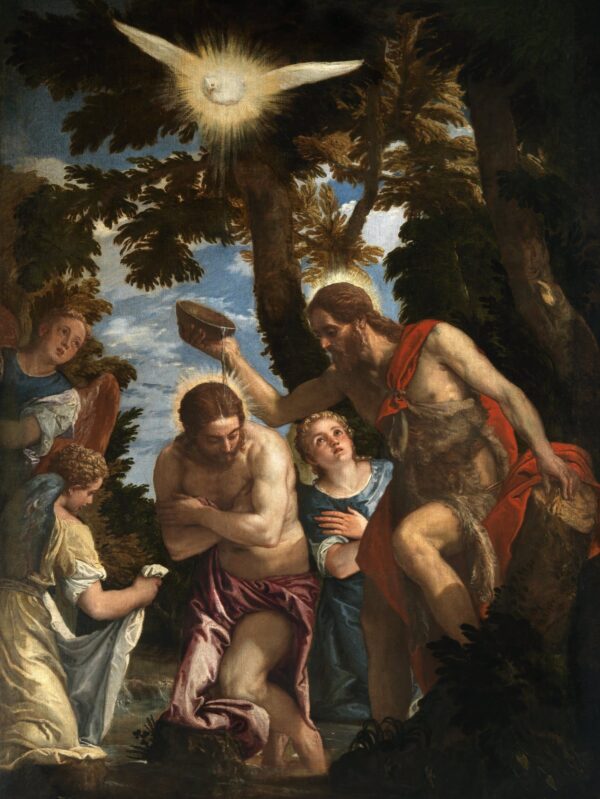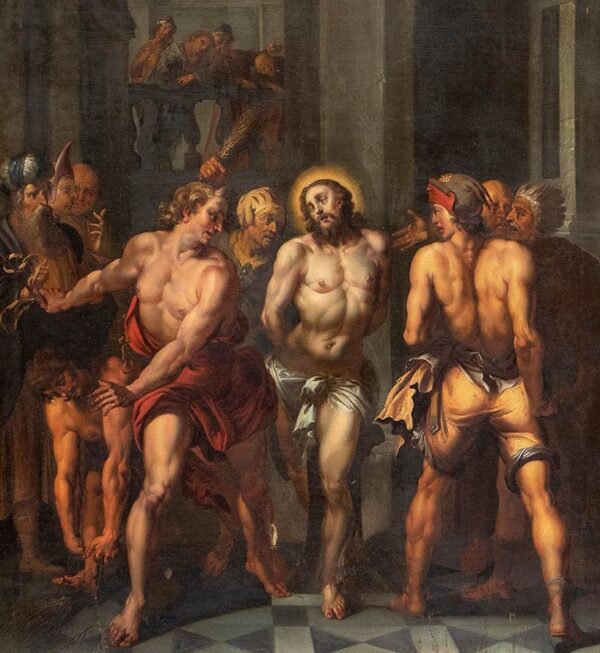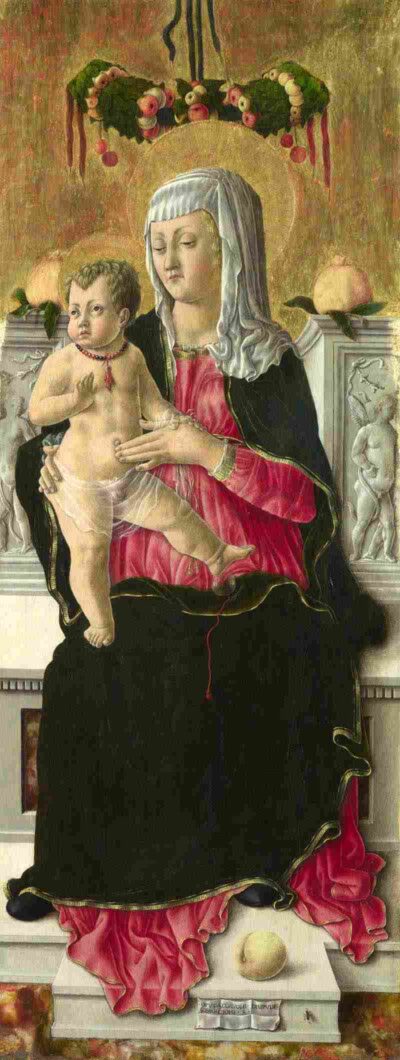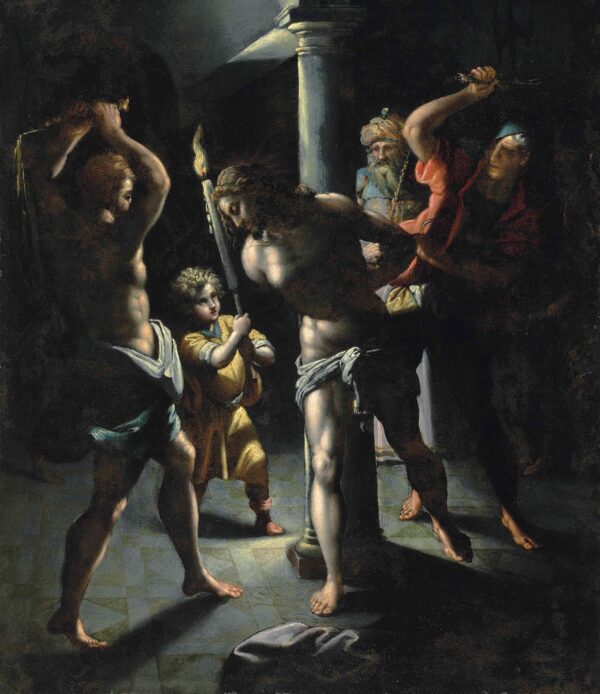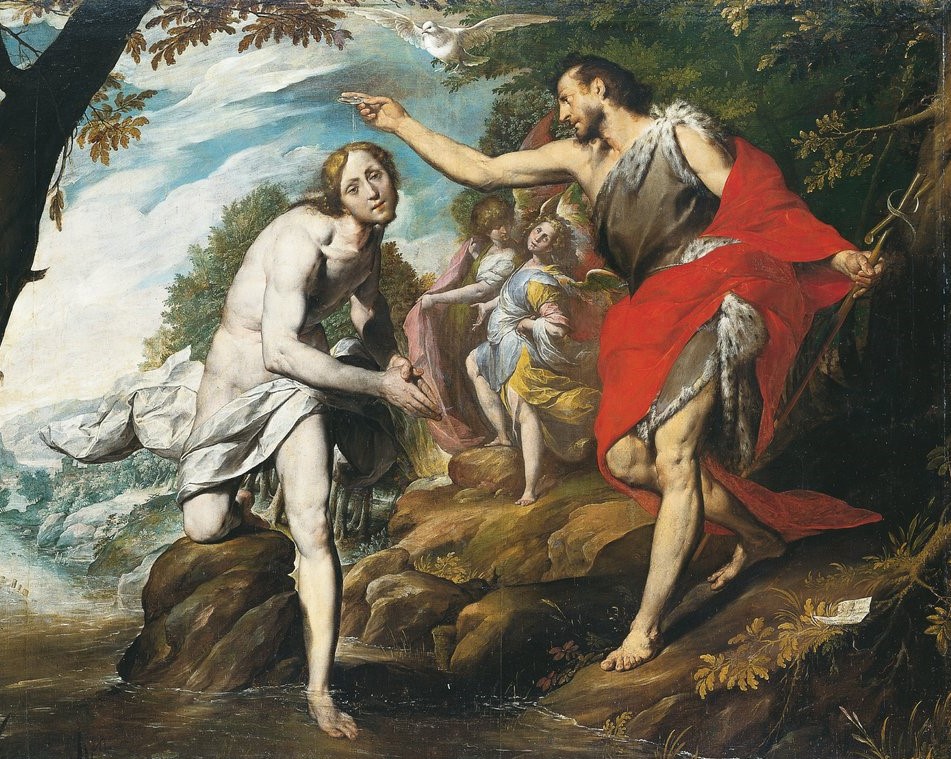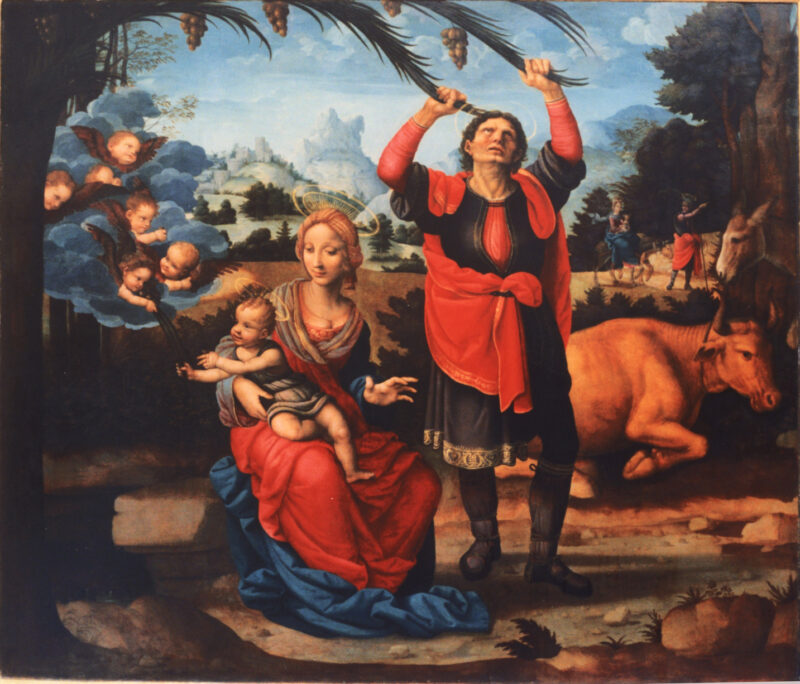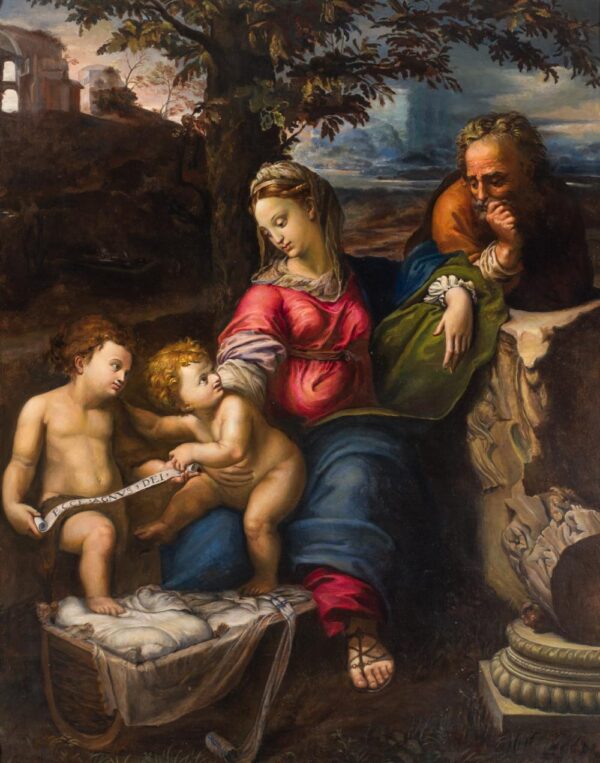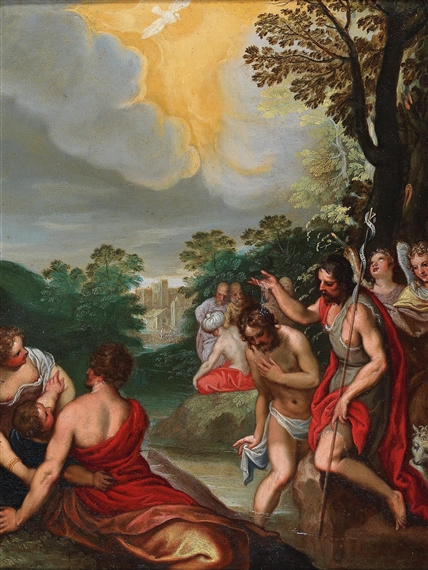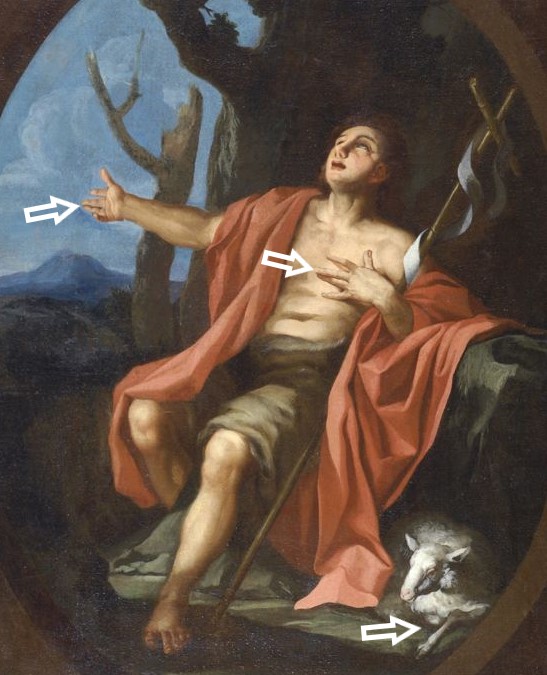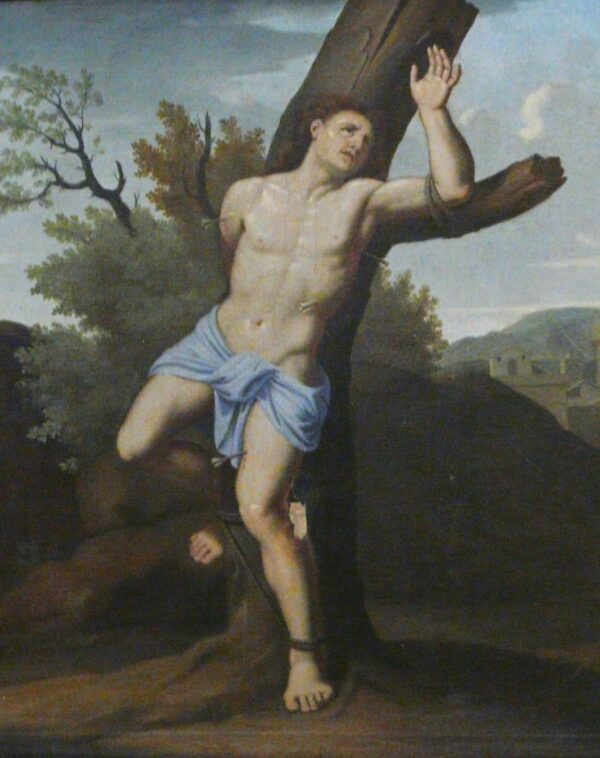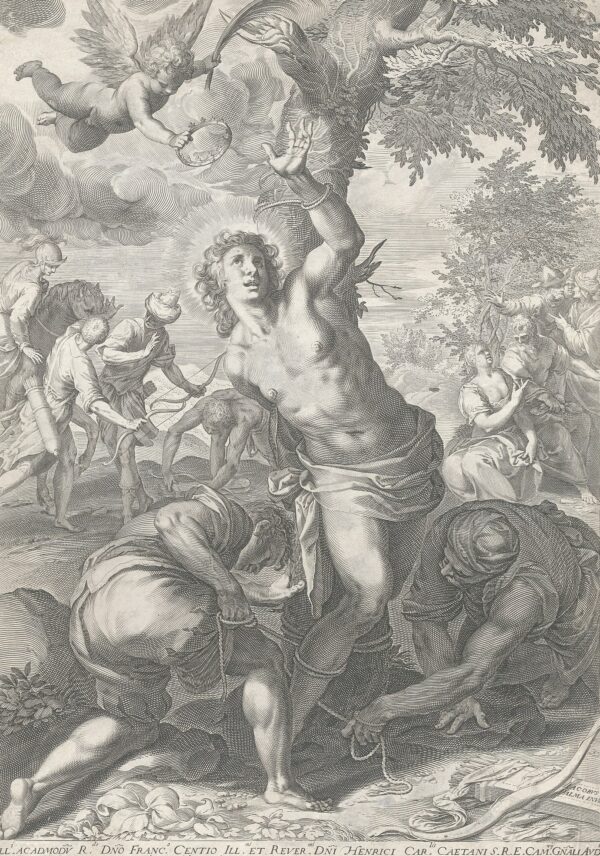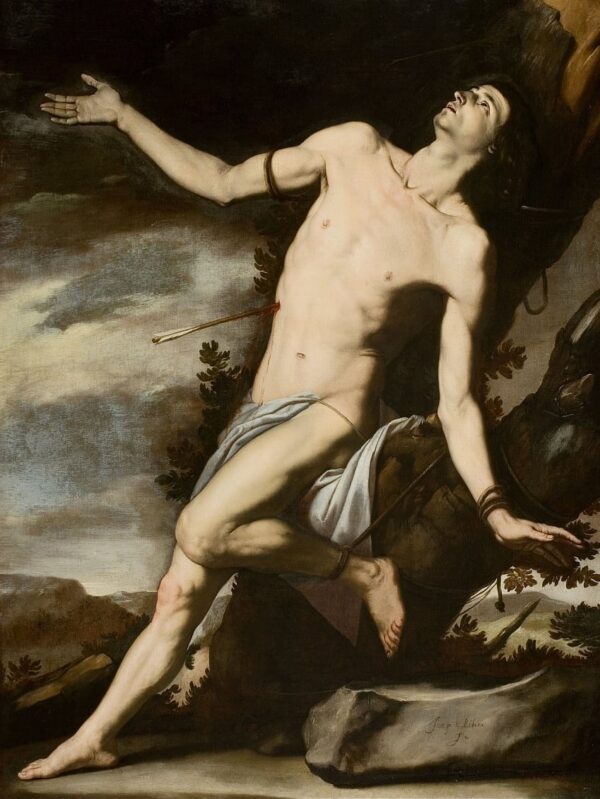Examples
CLICK ON THE IMAGES FOR AN ENLARGEMENT
One leg on the ground (sitting or standing), instead of two, symbolizes the merging of the polar energies (the sacred marriage).
Below are some examples from different spiritual traditions.
The Roman god Mercury (Hermes to the Greeks) with his staff the CADUCEUS, the classical symbol for a kundalini awakening. (Jacob Matham, 1597)
Tarot card number 11 Strength. Tarot of Marseille (Jacques Vieville), 17th century. Click here for the symbolic meaning of tarot card Strength.
The process of the MAGNUM OPUS in symbols. ONE LEG of the woman (SOPHIA/DE KUNDALINI) comes out from under her skirt: she personifies the divine energies that bring about the inner union, in the alchemist. The seven flowers represent the seven chakras. (Engraving of ‘The Fifth Key’, from the alchemical manuscript ‘The Twelve Keys of Basilius Valentinus’, circa 1600).
Venus, Mars and Mercury (with CADUCEUS!), Bartholomaus Spranger, 1587.
Examples from Christian art
CLICK ON THE IMAGES FOR AN ENLARGEMENT
Throughout the ages there have always been initiates, artists and mystics who knew that Jesus was not born as ‘the Son of God’, but had experienced a kundalini awakening, after which he was one with his Divine Father. The Gospel writers have hidden this spiritual truth in their texts in inventive ways, including the use of imagery and wordplay (see my books). Because of the rigid attitude of the church, the truth could not be spoken aloud, but underground, through esoteric groups such as the Freemasons, it found its way onto the canvas.
THE SIGN OF THE SACRED MARRIAGE (two fingers together: 2=1) is incorporated in many paintings, in one form or another, often in combination with other esoteric symbolism. This hand gesture refers to a fusion of the polar energies/duality, and with this to a process of kundalini awakening.
Andrea del Sarto
Bartholomeus Spranger
Bernardino Lanino, 1563.
Francesco Squarcione
Michelangelo Anselmi, Dayton Art Institute.
Luca Signorelli
Giovanni Bernardino Azzolino. The saint on the left is pointing to her PELVIS.
Jan Gossaert (Mabuse), Kunsthistorisches Museum, Viena.
Pordenone
Pelagonitissa, 1422, Galerie d’art de Skopje, Macedonia. The ARMS of the baby Jesus evoke the image of a rising (kundalini) SERPENT. The FACES against each other refers to the fusion of the masculine and the feminine energies/the SACRED MARRIAGE (click here).
Diana Benedetto, 1486.
Michael Pacher. The colors BLACK, WHITE, YELLOW AND RED refer to the MAGNUM OPUS (click here) of the alchemist. Read about the RESURRECTION in my book ‘Mary Magdalene, the disciple whom Jesus loved’.
Corrado Giaquinto, 18th century.
Il Sodoma, 1513, Galleria Sabauda, Turin. The apostle JOHN (in the foreground with eagle) looks like a WOMAN. This is a reference to MARY MAGDALENE. Read about this in my book ‘Mary Magdalene, the disciple whom Jesus loved’.
Jacopo Pontormo
Francisco de Zurbarán
Artist unknown
Jacopino di Francesco (pseudo)
Moretto da Brescia
Paolo Veronese. The BAPTISM of Jesus is a metaphor for a TRANSFORMATION PROCESS. Read about this in my book ‘John the Baptist who became Jesus the Christ’.
Giuseppe Cesari
Francesco Granacci
Lucas Cranach
Giorgio Schiavone. The RED CORAL (click here) around the neck of Jesus is a kundalini symbol.
Carlo Crivelli, 1485.
Orazio Samacchini
Lucas Cranach the Elder, circa 1535.
Denys Calvaert (attr.)
William Adolphe Bouguereau
Bonifacio de Pitati
Giovanni Battista Crespi (Il Cerano), 1527. The BAPTISM is an INNER process: a metaphor for a KUNDALINI AWAKENING. That is why the artist has given Jesus so little color. The DOVE of the Holy Spirit hangs over BOTH men. Read about this in my book ‘John the Baptist who became Jesus the Christ’.
The mystical marriage of Saint Catherine
Many artists have used the theme of the mystical marriage of Saint Catherine to the baby Jesus
(with Jesus slipping a wedding ring on the saint’s finger) to refer to a kundalini process, and the inner sacred marriage (2=1). .
John the Baptist
For 2,000 years, John the Baptist has been seen as the one who first foretells the coming of the Messiah and then recognizes Jesus as “the Lamb of God” at his baptism in the Jordan. John the Baptist, however, was not merely the herald of Jesus. He was Jesus. He became a Christos, an anointed one, after a process of kundalini awakening. Read about this in my book ‘John the Baptist who became Jesus the Christ’.
There has always been a group of initiates throughout the ages who knew that John the Baptist was Jesus. Many artists have incorporated this (veiled) in their paintings.
Saint Sebastian
Kundalini symbolism is incorporated in many paintings of Saint Sebastian, who died a martyr, pierced by arrows. He is often depicted standing on one leg, and the way his arms are tied to the tree evokes the image of (the spiral movement of) an ascending (kundalini) serpent.

